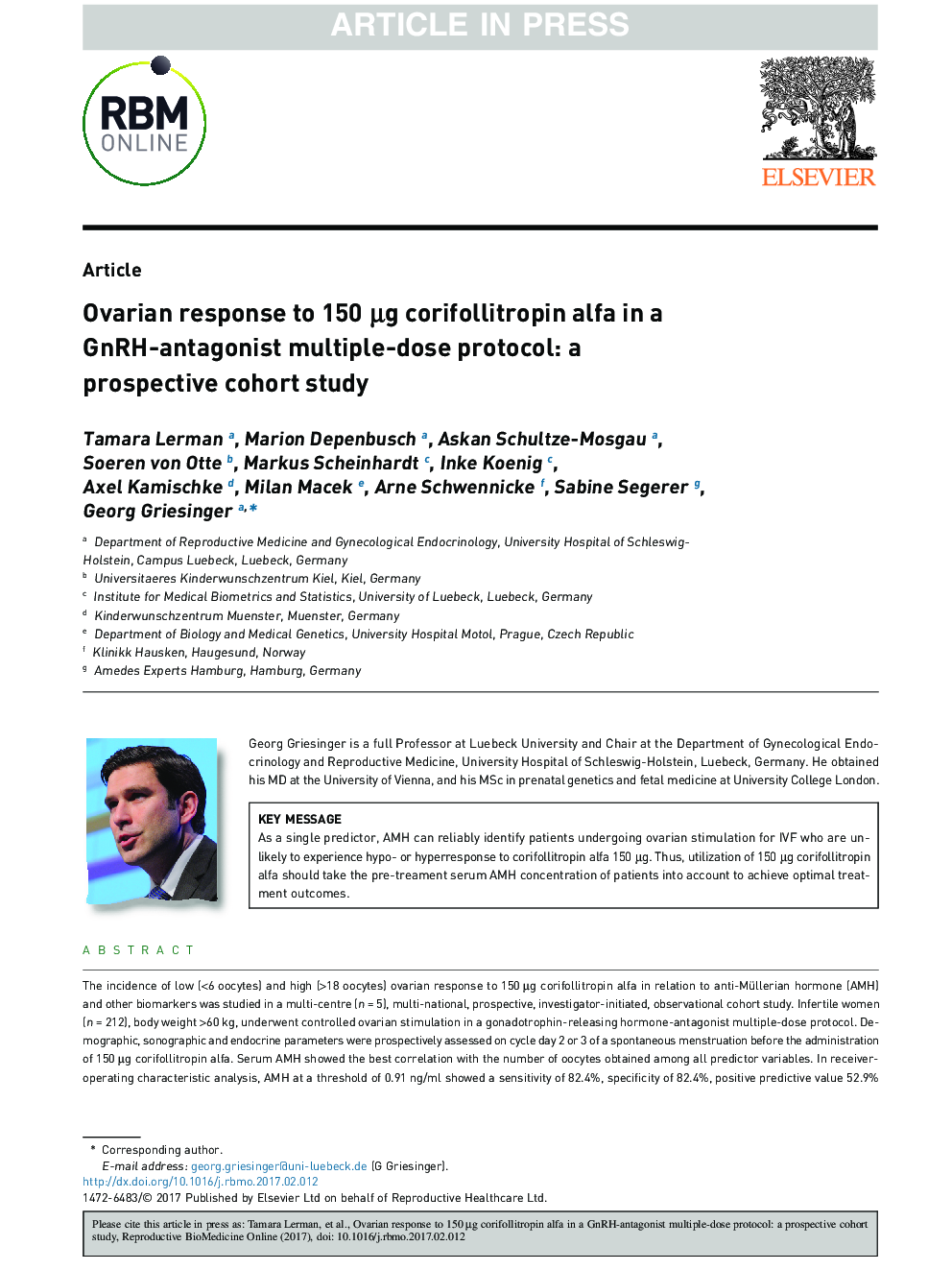| Article ID | Journal | Published Year | Pages | File Type |
|---|---|---|---|---|
| 5696609 | Reproductive BioMedicine Online | 2017 | 7 Pages |
Abstract
The incidence of low (<6 oocytes) and high (>18 oocytes) ovarian response to 150âµg corifollitropin alfa in relation to anti-Müllerian hormone (AMH) and other biomarkers was studied in a multi-centre (n = 5), multi-national, prospective, investigator-initiated, observational cohort study. Infertile women (n = 212), body weight >60âkg, underwent controlled ovarian stimulation in a gonadotrophin-releasing hormone-antagonist multiple-dose protocol. Demographic, sonographic and endocrine parameters were prospectively assessed on cycle day 2 or 3 of a spontaneous menstruation before the administration of 150âµg corifollitropin alfa. Serum AMH showed the best correlation with the number of oocytes obtained among all predictor variables. In receiver-operating characteristic analysis, AMH at a threshold of 0.91âng/ml showed a sensitivity of 82.4%, specificity of 82.4%, positive predictive value 52.9%and negative predictive value 95.1% for predicting low response (area under the curve [AUC], 95% CI; P-value: 0.853, 0.769-0.936; <0.0001). For predicting high response, the optimal threshold for AMH was 2.58âng/ml, relating to a sensitivity of 80.0%, specificity 82.1%, positive predictive value 42.5% and negative predictive value 96.1% (AUC, 95% CI; P-value: 0.871, 0.787-0.955; <0.0001). In conclusion, patients with serum AMH concentrations between approximately 0.9 and 2.6âng/ml were unlikely to show extremes of response.
Keywords
Related Topics
Health Sciences
Medicine and Dentistry
Obstetrics, Gynecology and Women's Health
Authors
Tamara Lerman, Marion Depenbusch, Askan Schultze-Mosgau, Soeren von Otte, Markus Scheinhardt, Inke Koenig, Axel Kamischke, Milan Macek, Arne Schwennicke, Sabine Segerer, Georg Griesinger,
